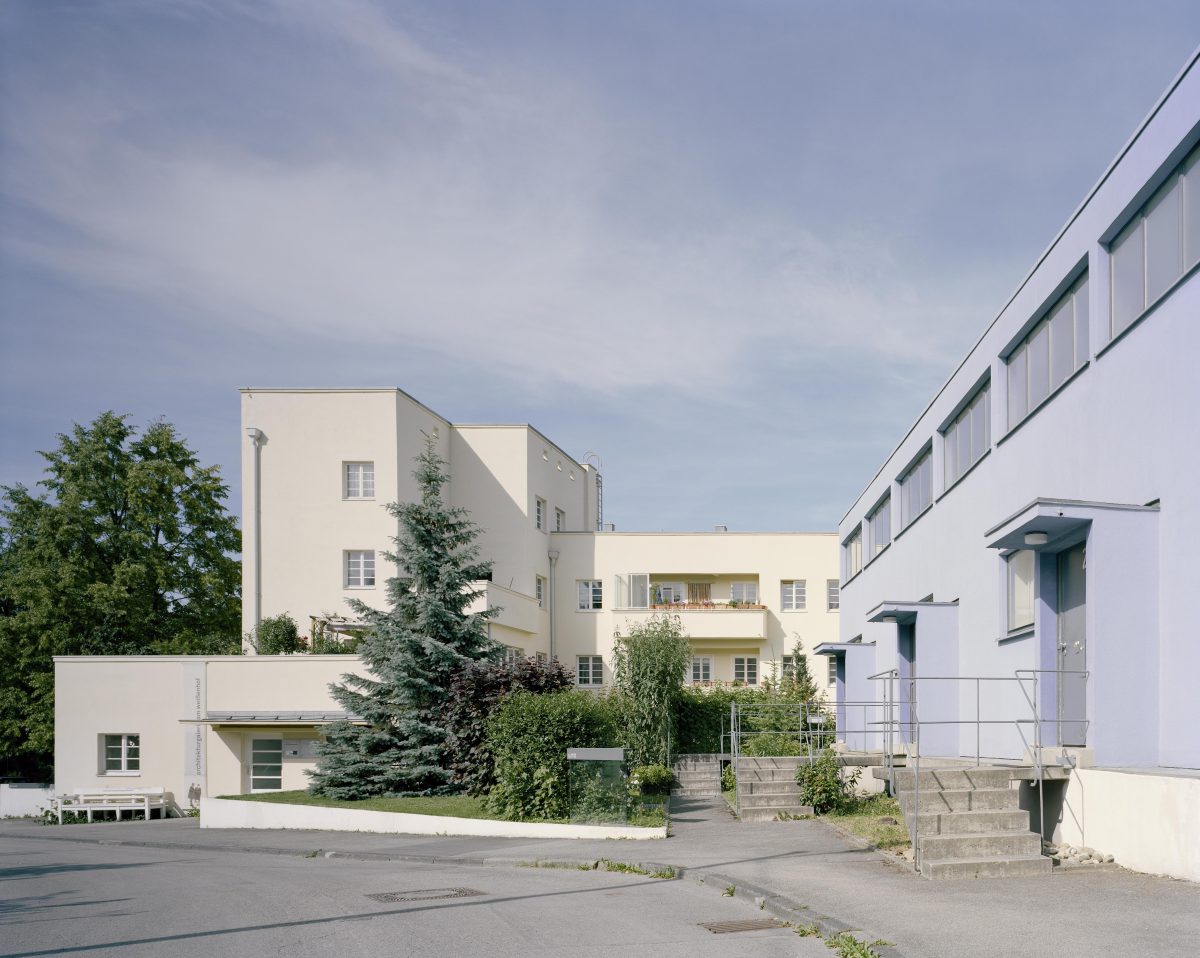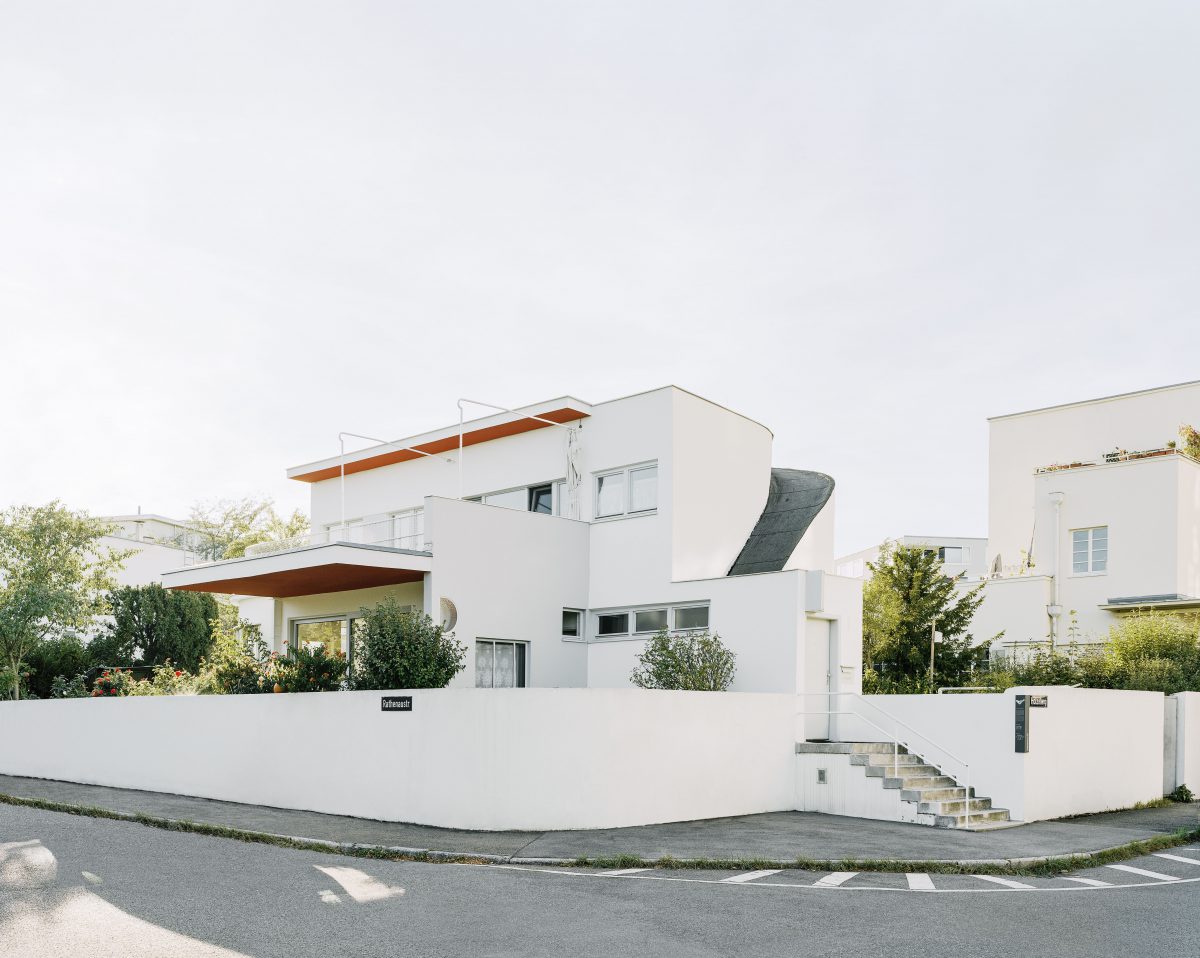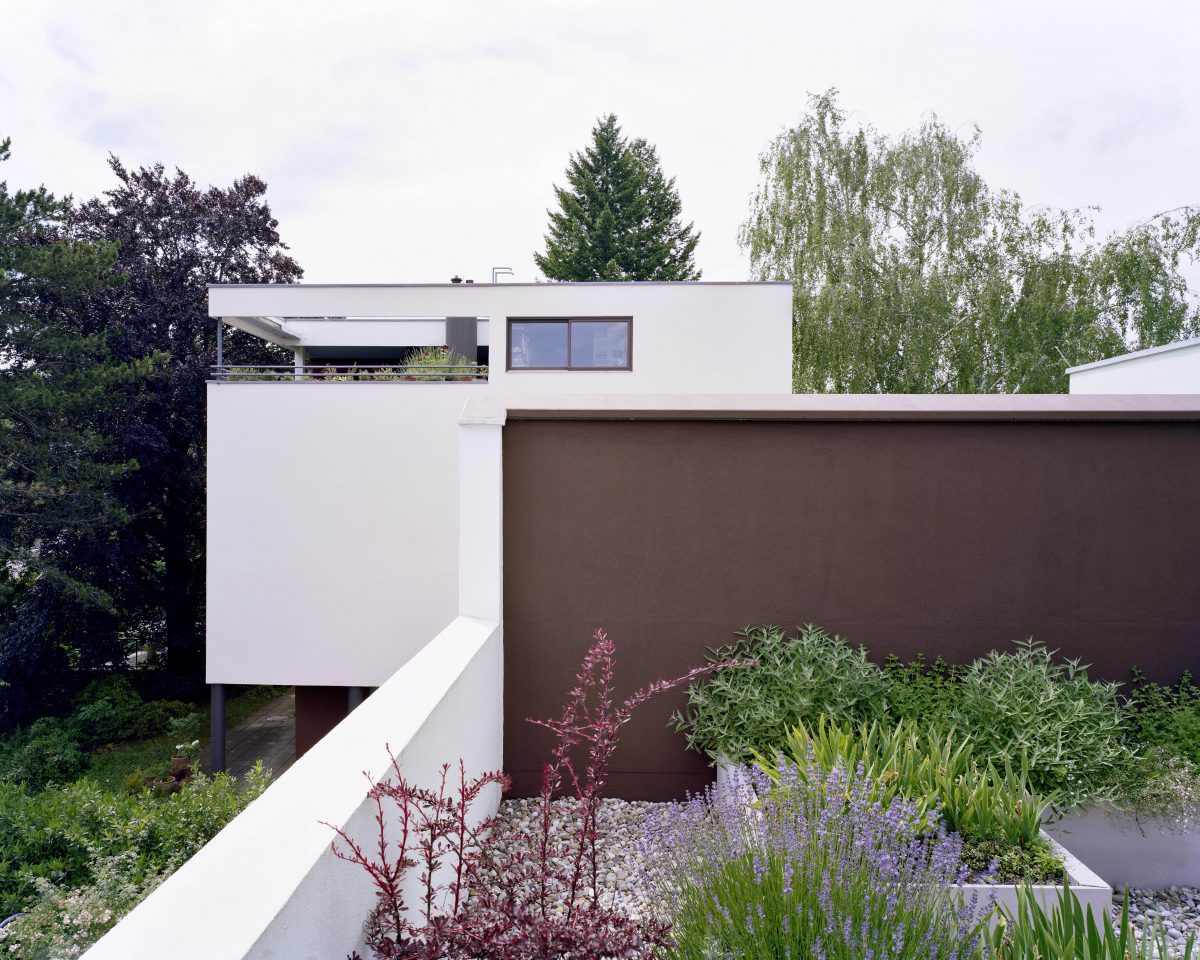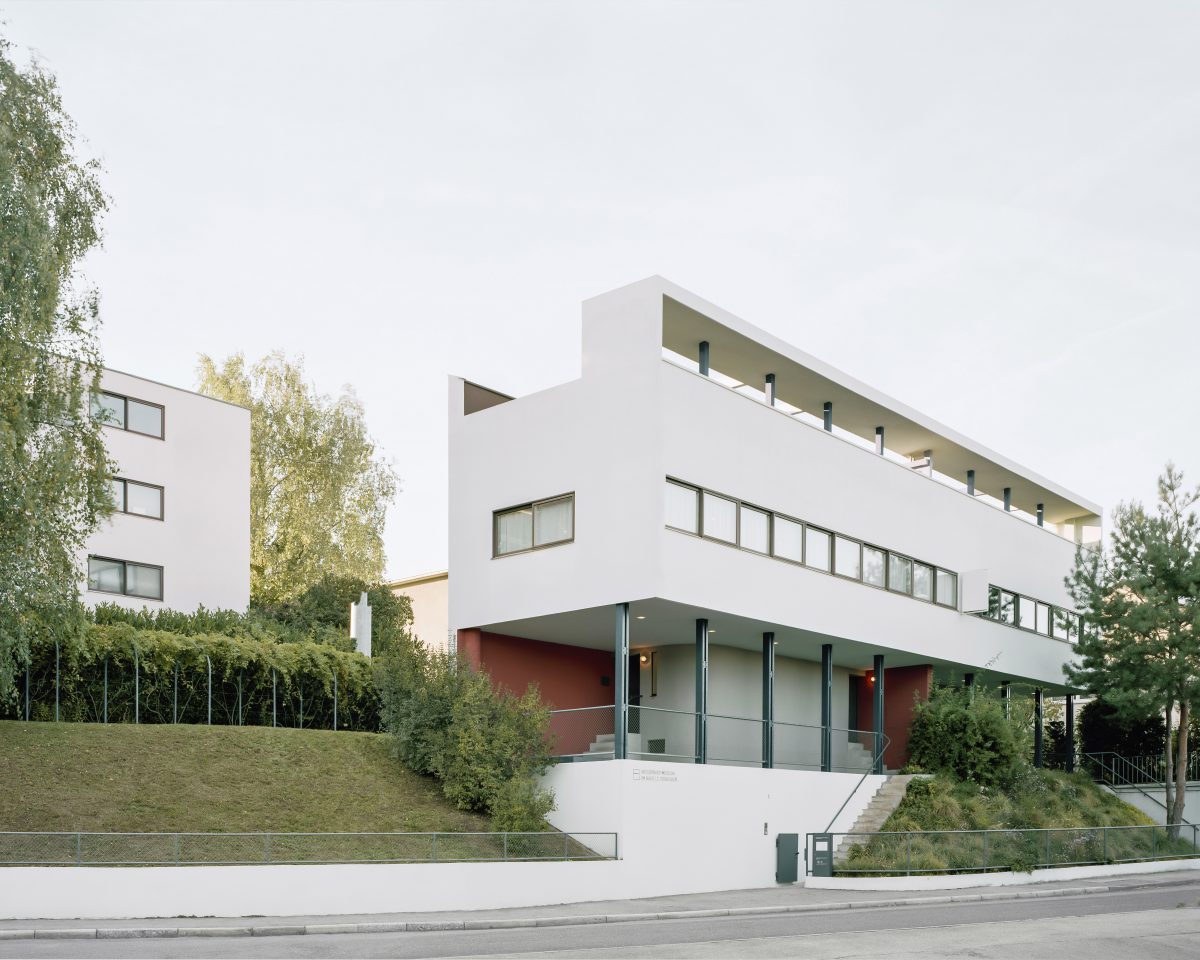Welcome
A visit to the Weissenhof Estate reveals the richness of ideas involved in the buildings constructed in 1927 and explains their significance in the history of architecture.
A system of signs leads visitors through the estate, providing information about the privately used buildings that are not accessible to visitors. The only building that is open to the public is the museum in the two semidetached houses by Le Corbusier and Pierre Jeanneret.
The presentation on the signs is based on the floorplans from the 1927 book Bau und Wohnen (Building and Living).
Ten of the thirty-three original buildings were destroyed during World War II or in the postwar period and replaced by new buildings.
A plaque on the Weissenhofwerkstatt shows the plan of the estate and indicates all of the participating architects.
The Buildings
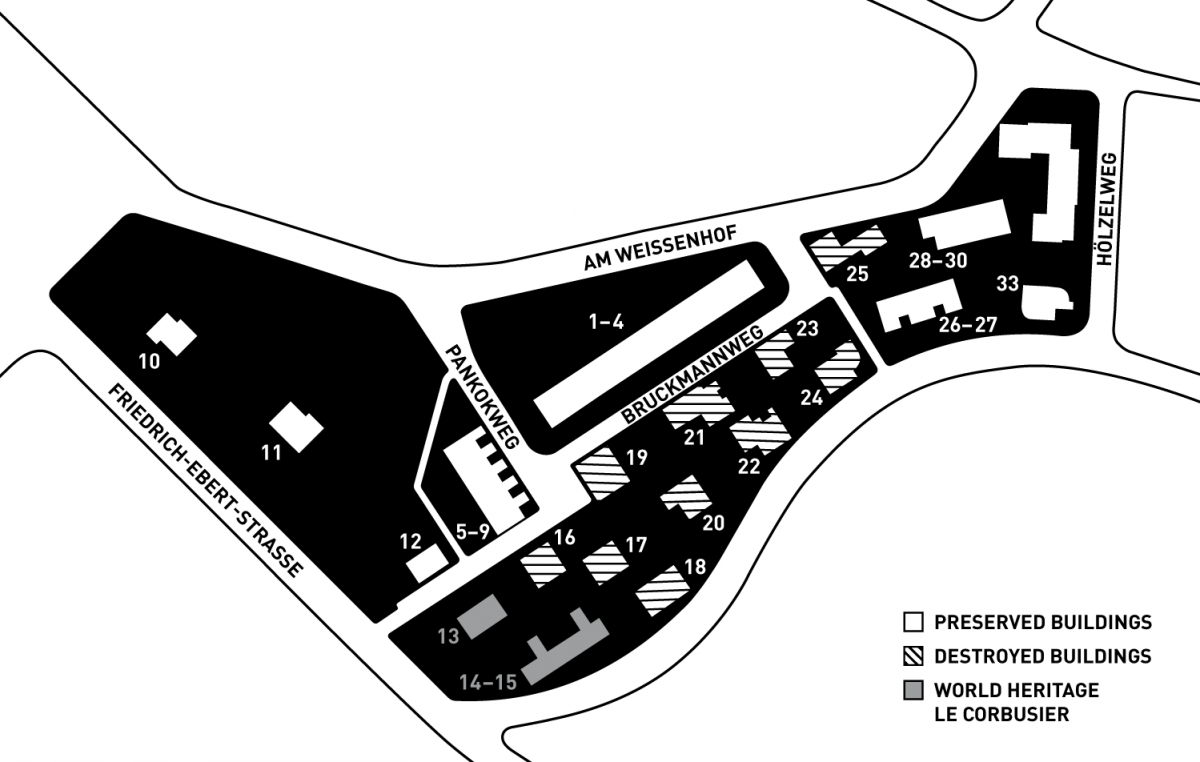
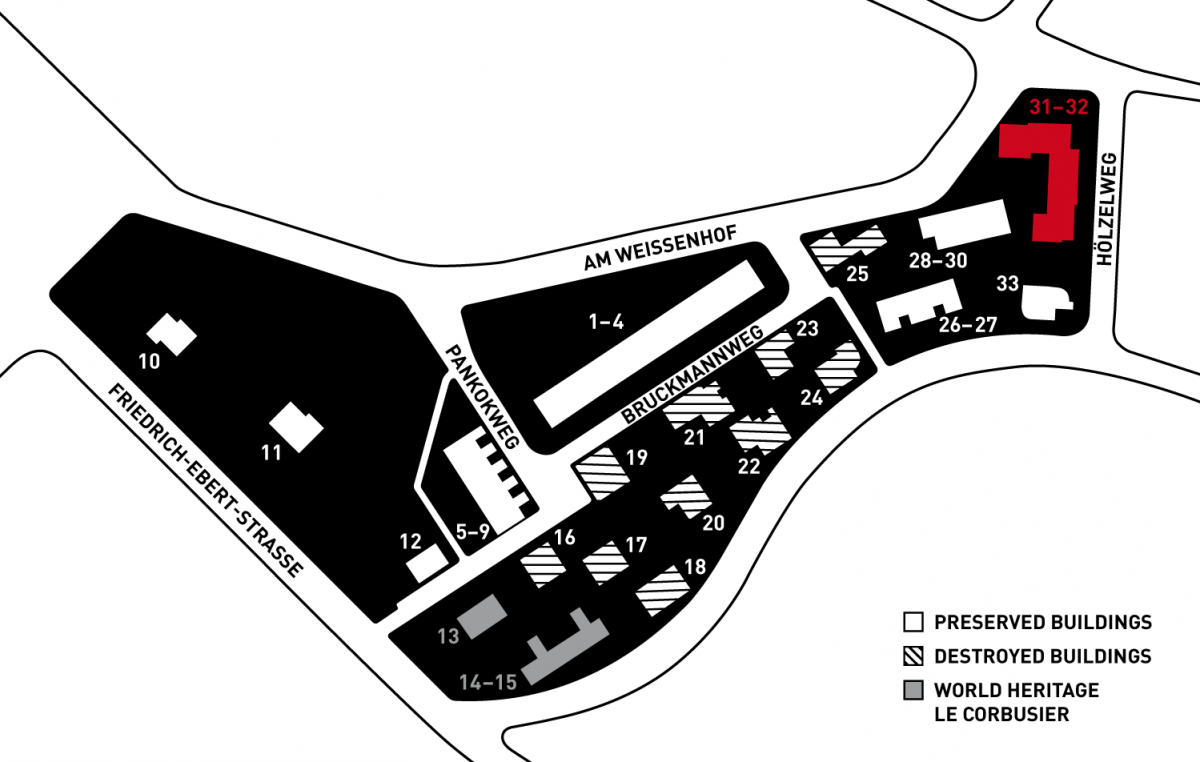
Am Weissenhof 30–32 and Hölzelweg 3–5
Apartment building with twelve apartments
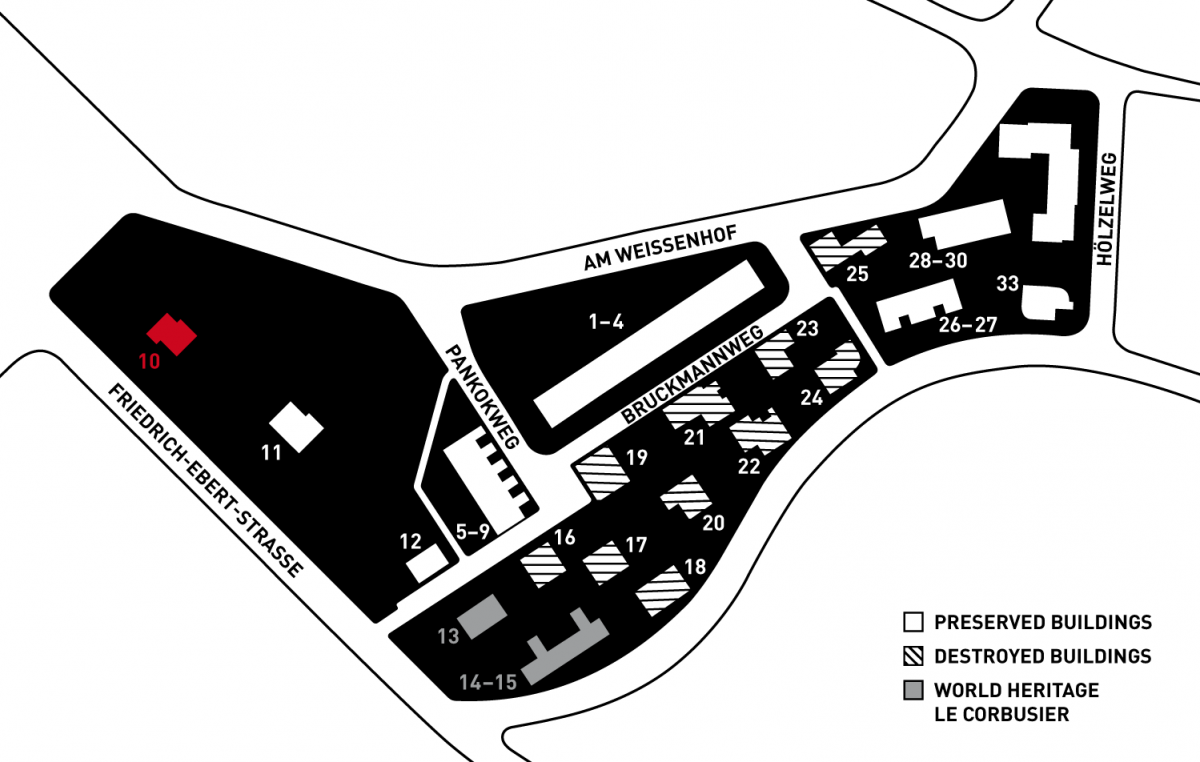
Friedrich-Ebert-Strasse 118
Single-family dwelling
Now a two-family dwelling
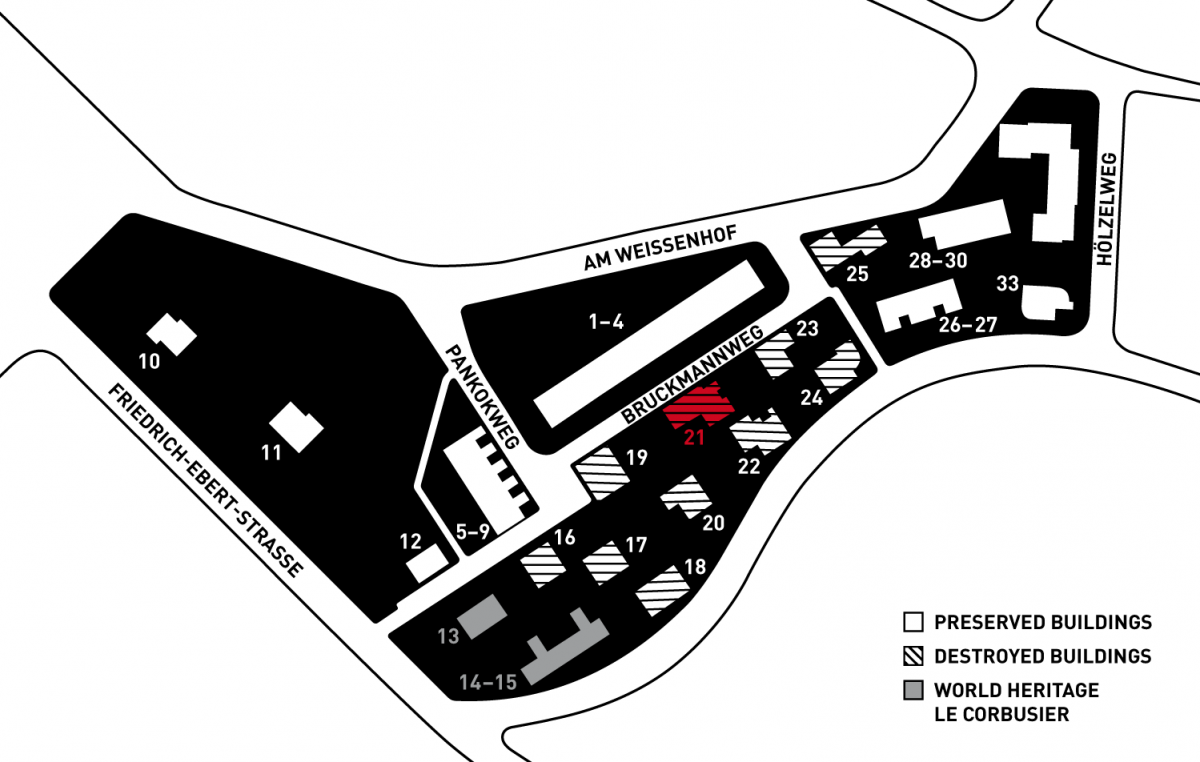
Bruckmannweg 10
Single-family dwelling, destroyed
Now an undeveloped lot
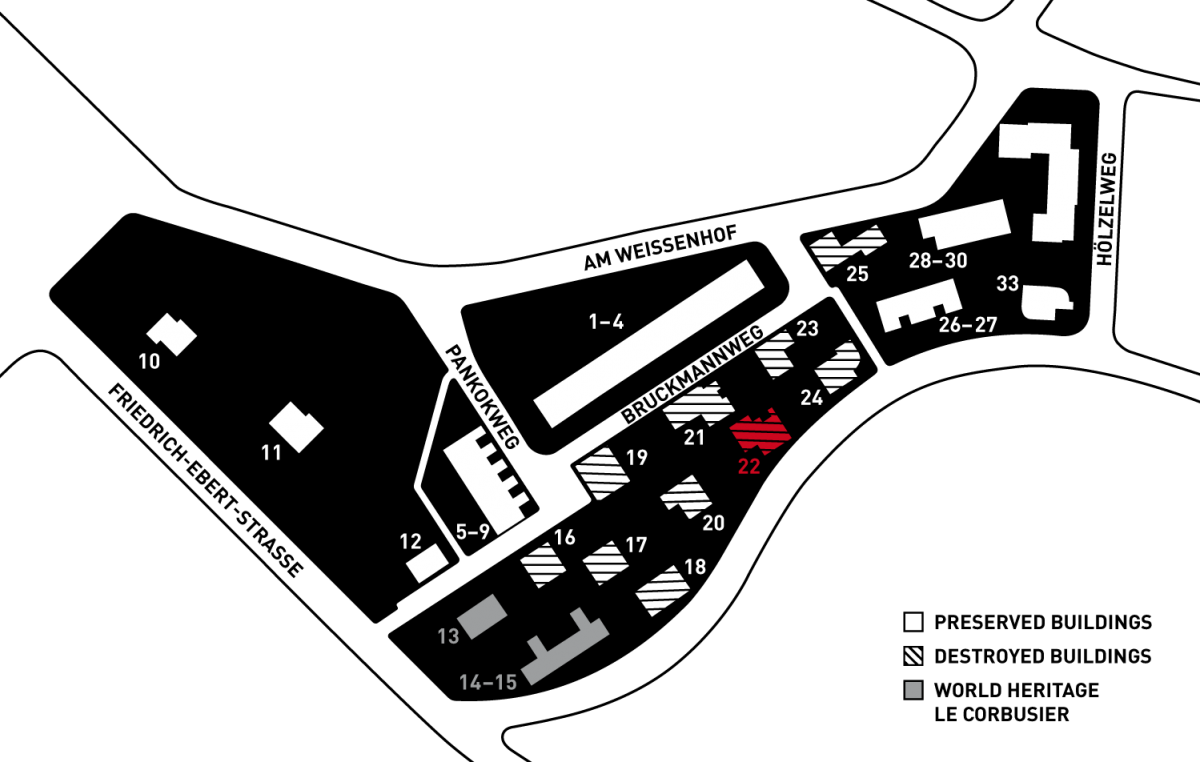
Rathenaustrasse 9
Single-family dwelling, destroyed
Replaced by a new three-family residence in 1951
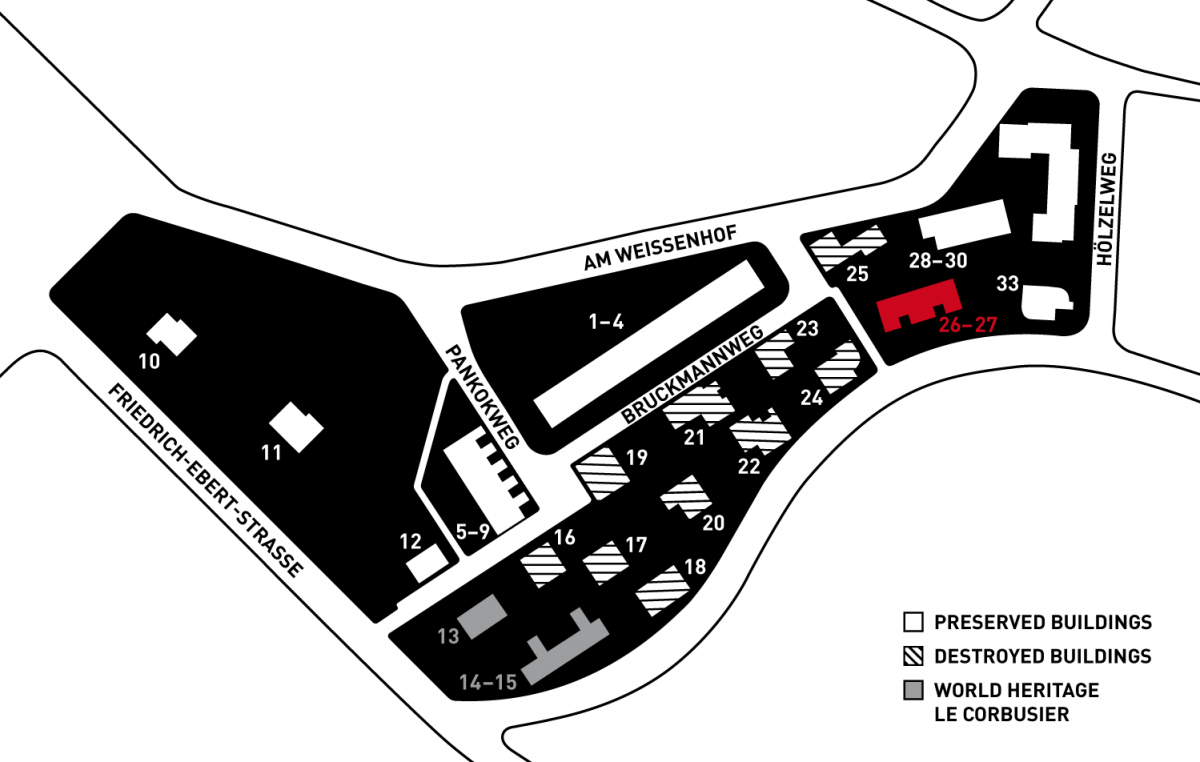
Rathenaustrasse 13–15
Pair of semidetached houses
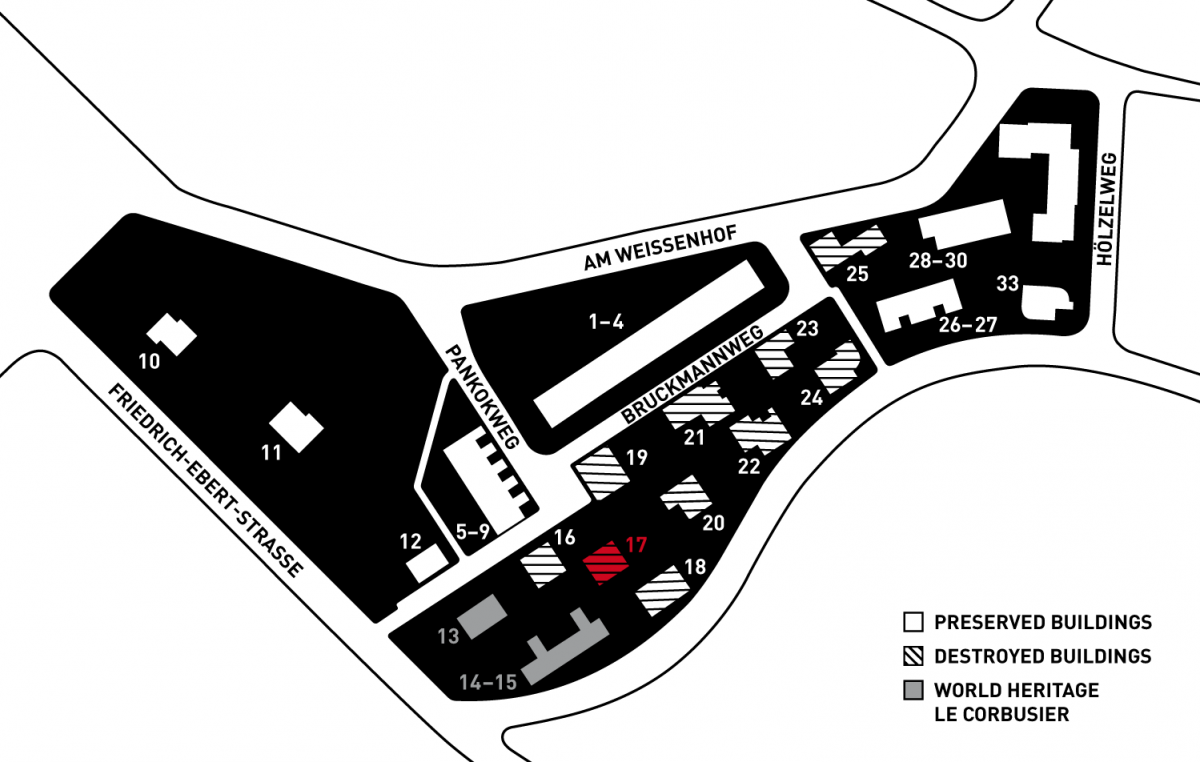
Bruckmannweg 4
Two single-family dwellings, destroyed
Buildings 16 and 17 were replaced by a new four-family residence in 1955
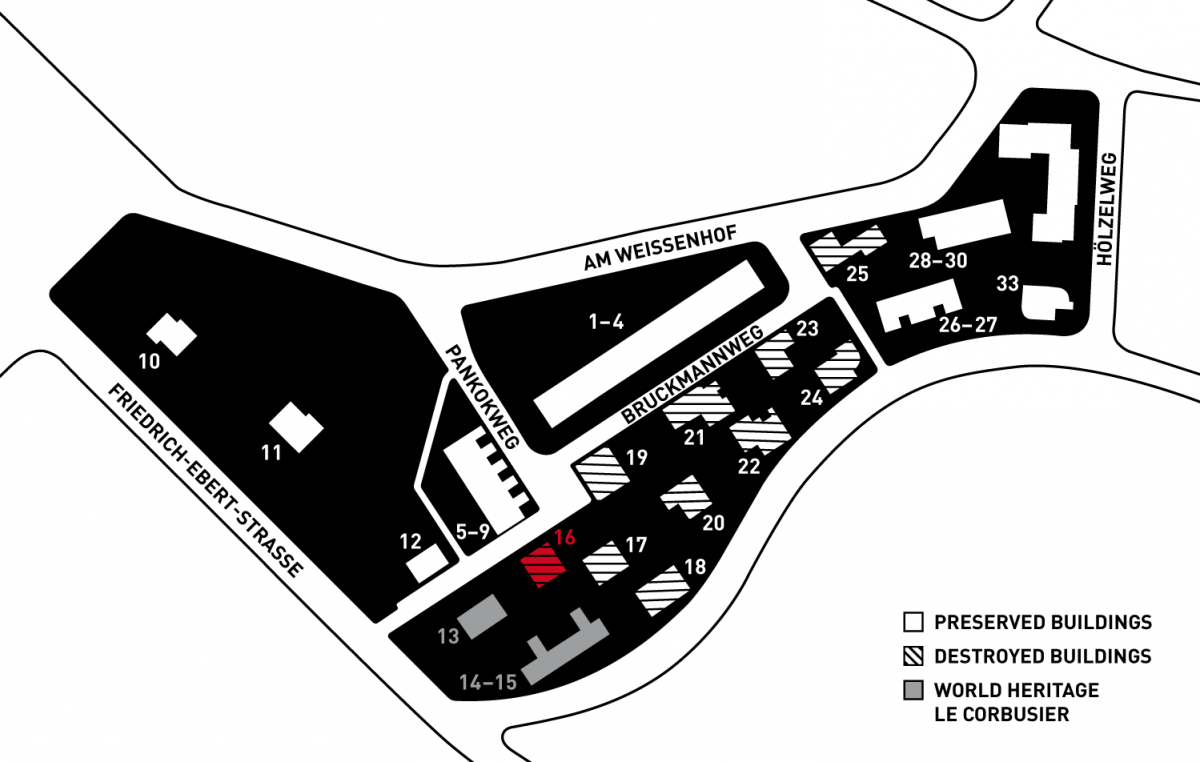
Bruckmannweg 6
Two single-family dwellings, destroyed
Buildings 16 and 17 were replaced by a new four-family residence in 1955
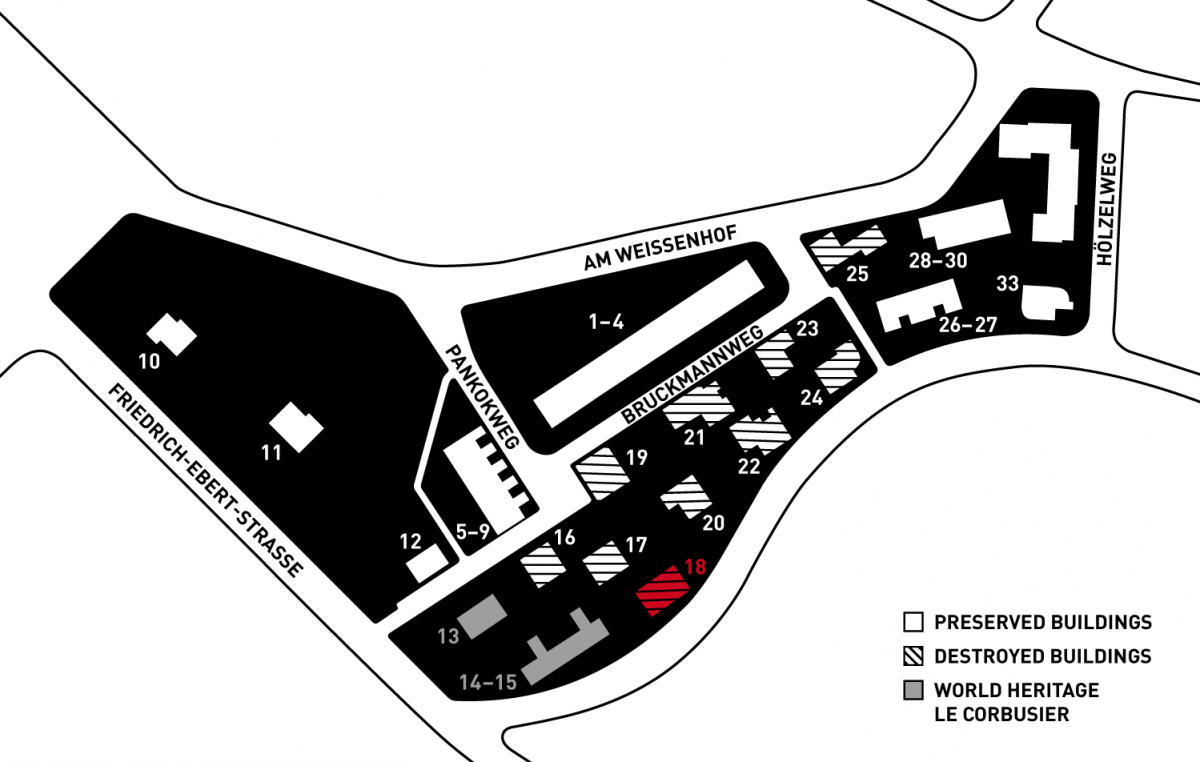
Rathenaustrasse 5
Single-family dwelling, destroyed
Replaced by a new three-family dwelling in 1954
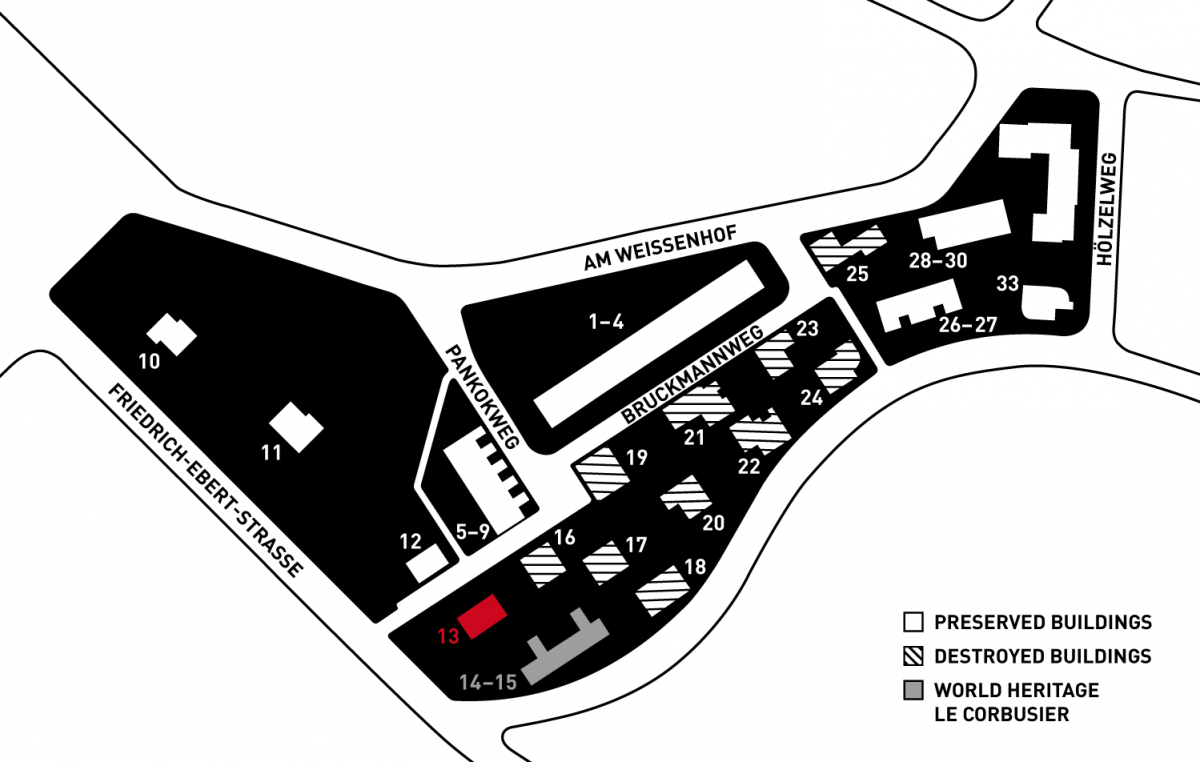
Bruckmannweg 2
Single-family dwelling
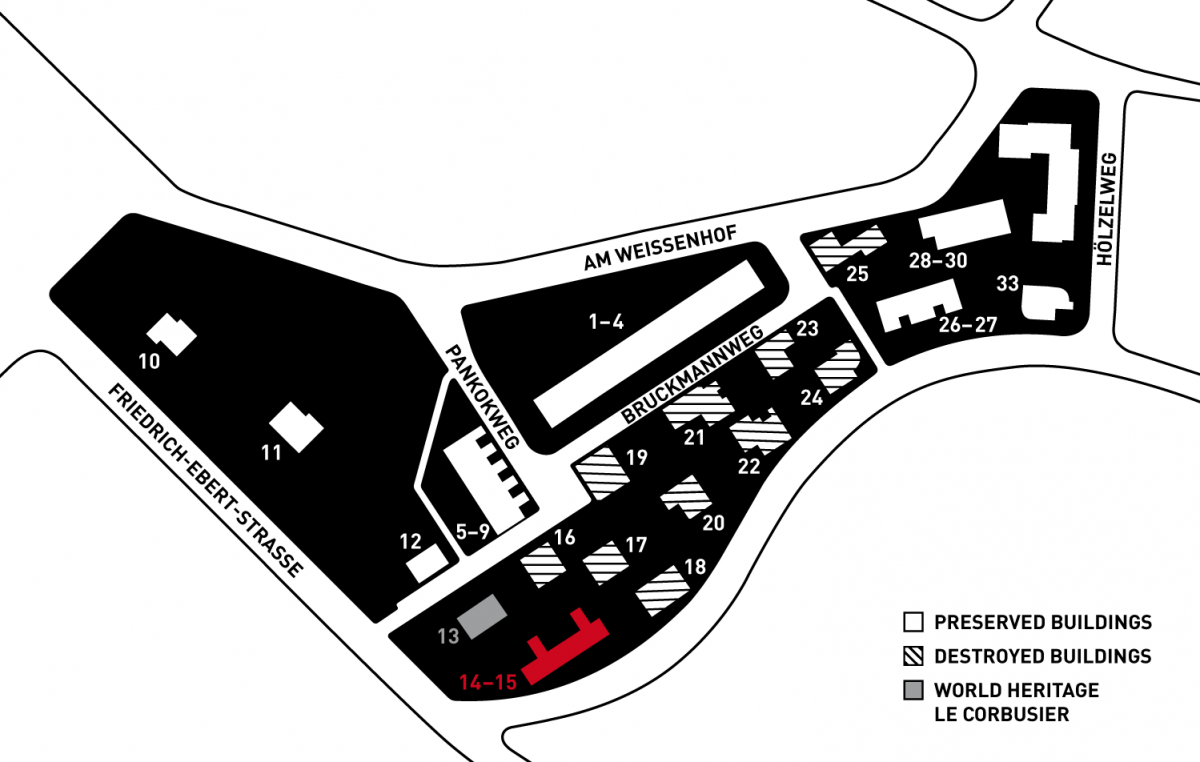
Rathenaustrasse 1–3
Pair of semidetached houses
Now the Weissenhof Museum in the Le Corbusier Building
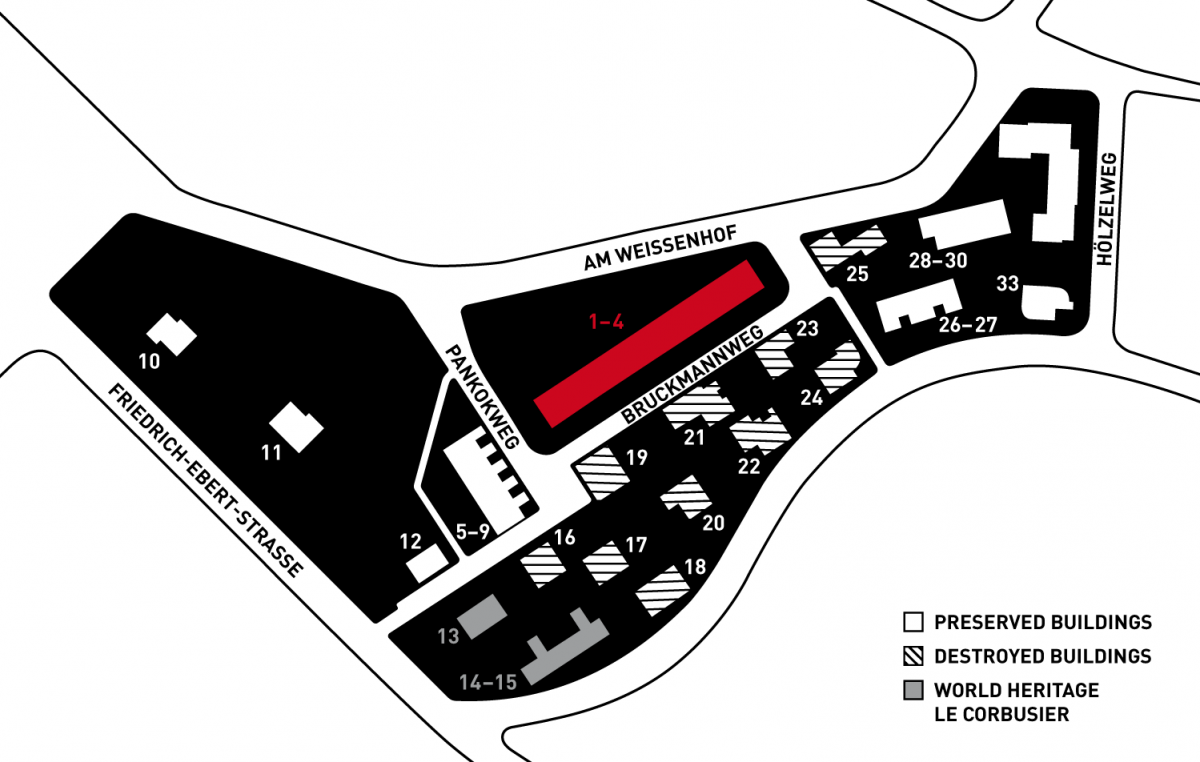
Am Weissenhof 16–20
Apartment building with twenty-four apartments
Now twenty-eight apartments
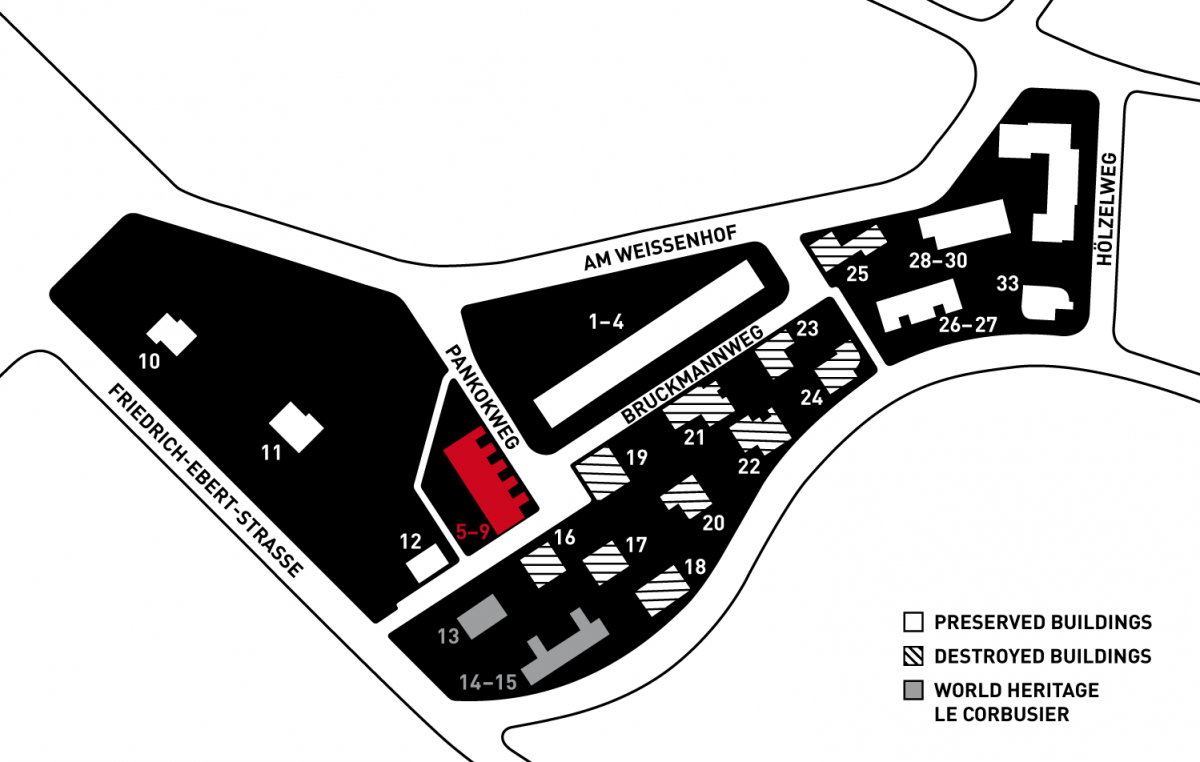
Pankokweg 1–9
Five row houses
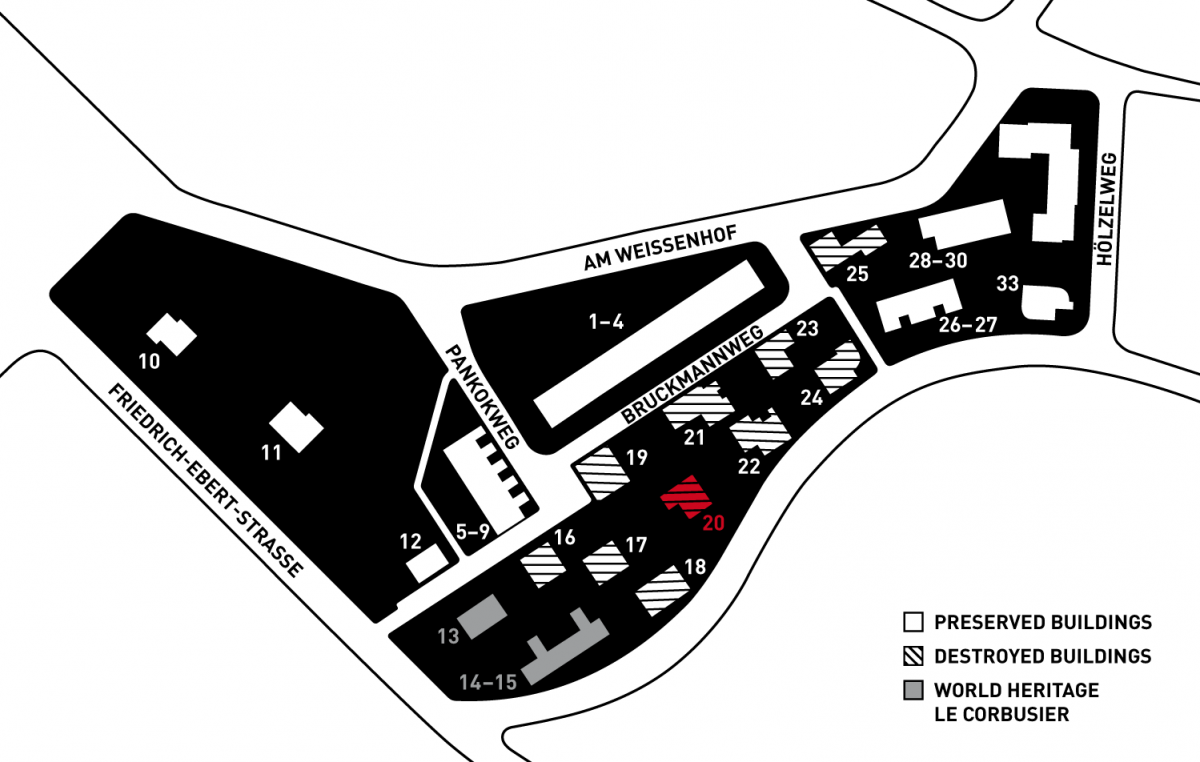
Rathenaustrasse 7
Single-family dwelling, destroyed
Replaced by a new two-family dwelling in 1949
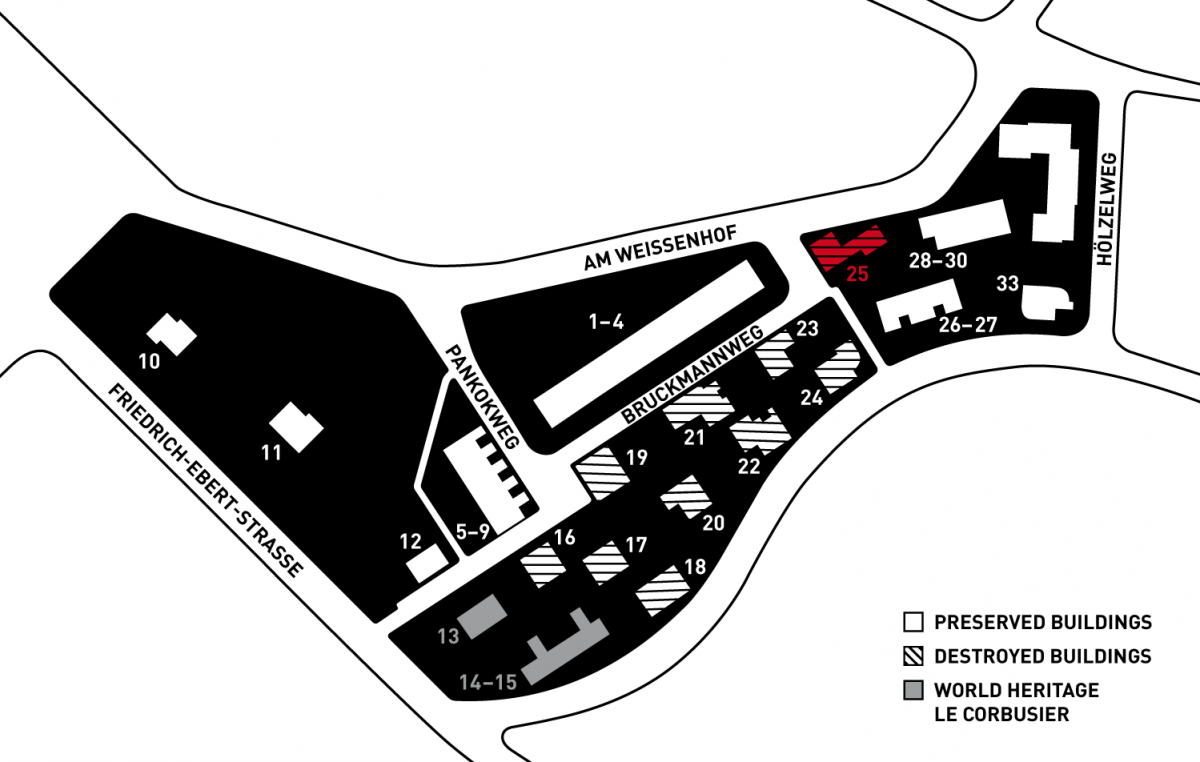
Am Weissenhof 22
Single-family dwelling, destroyed
Replaced by a new four-family dwelling in 1956
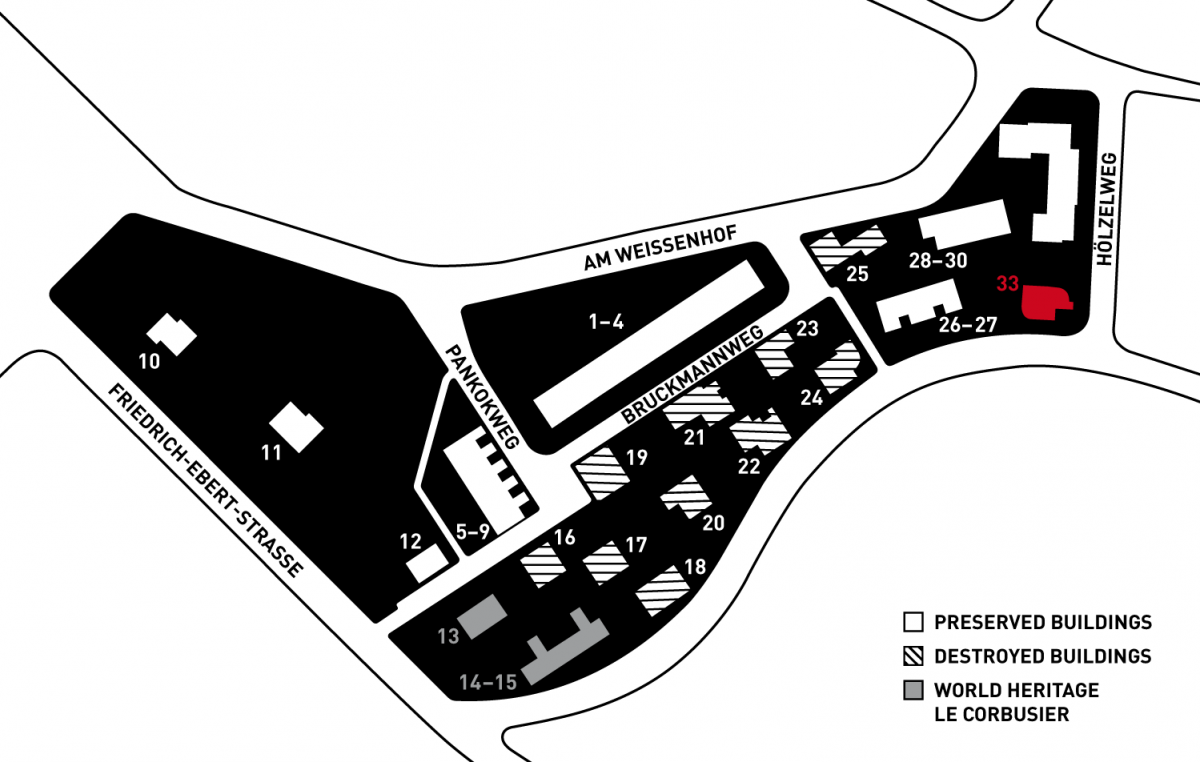
Hölzelweg 1
Single-family dwelling
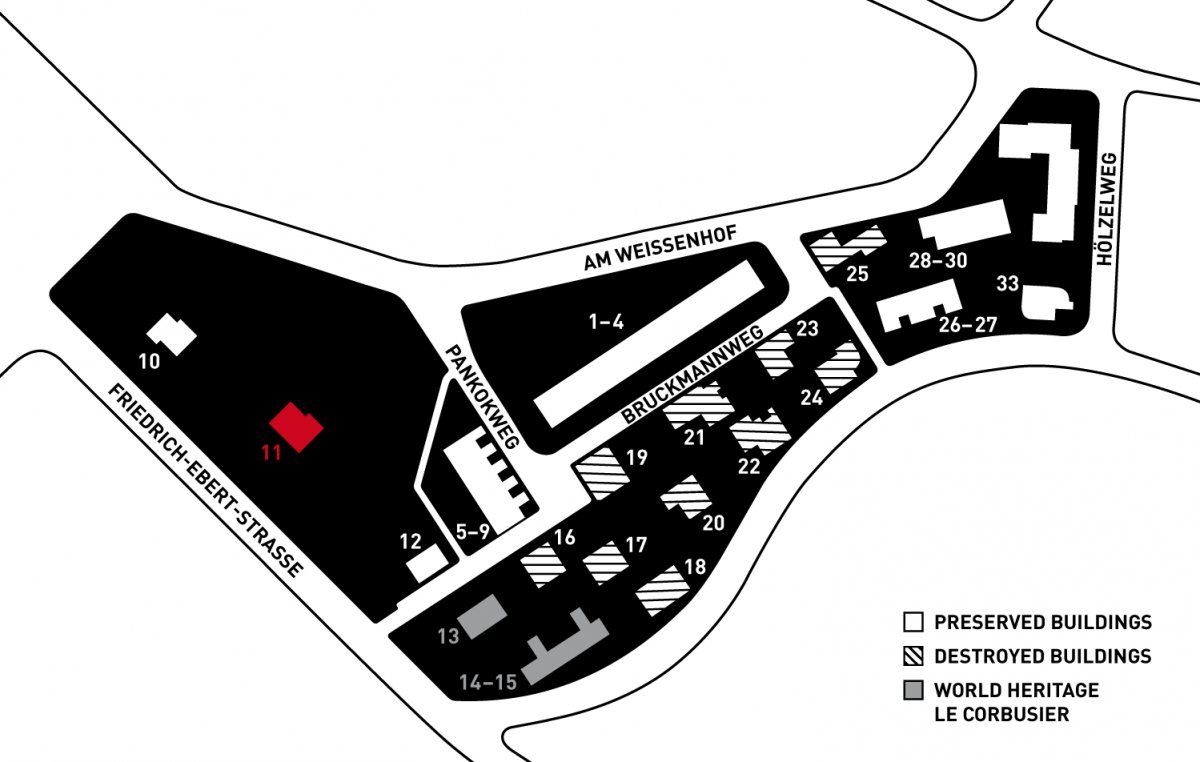
Friedrich-Ebert-Strasse 114
Single-family dwelling
Now a two-family dwelling
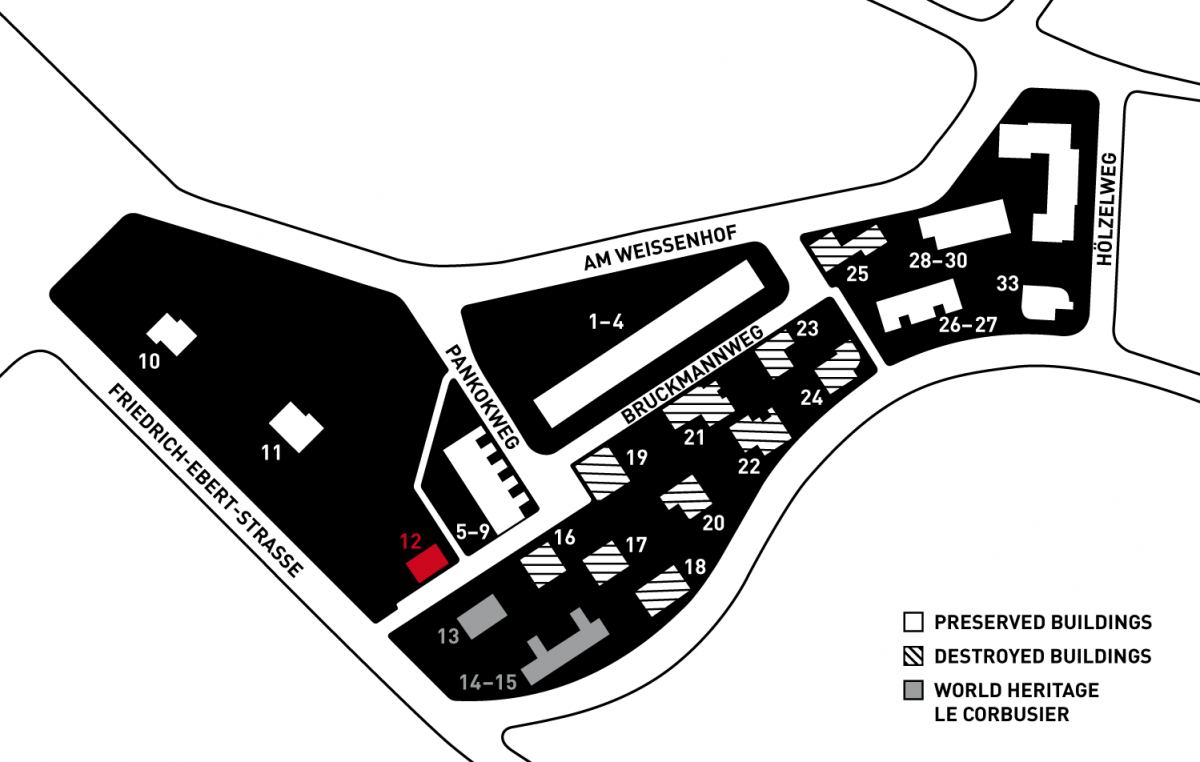
Bruckmannweg 1
Single-family dwelling
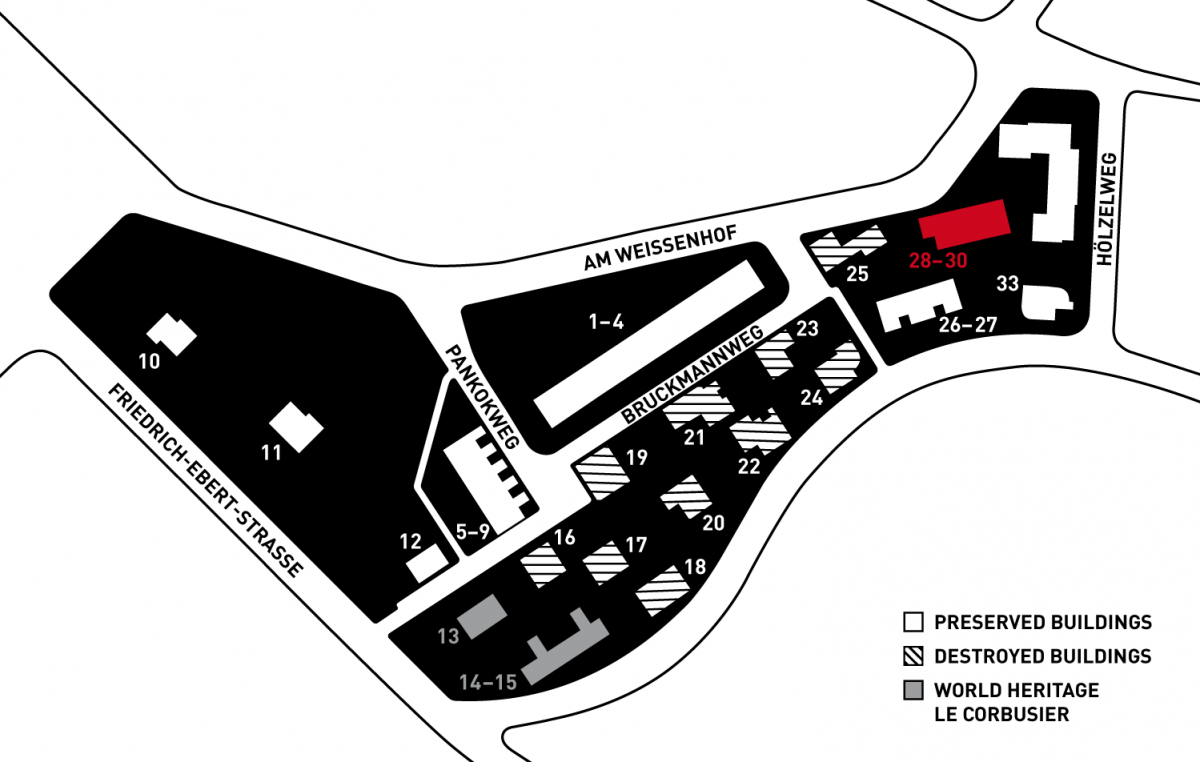
Am Weissenhof 24–28
Three row houses
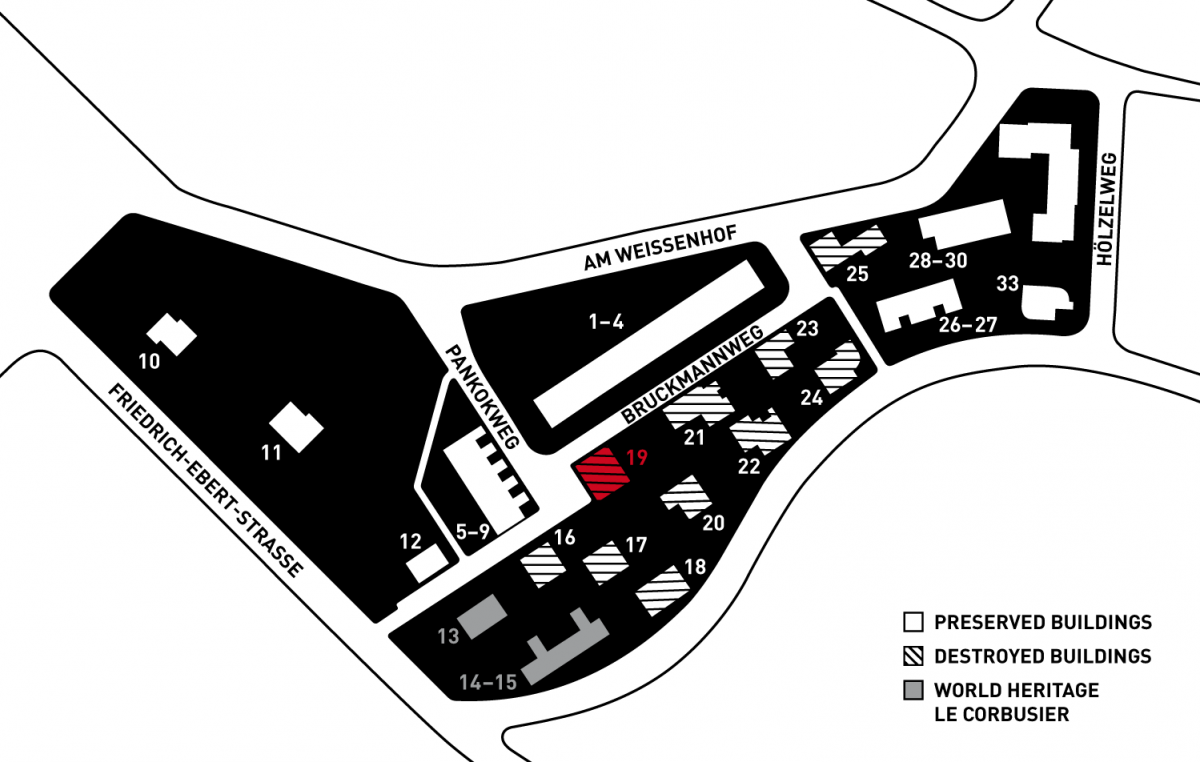
Bruckmannweg 8
Single-family dwelling, destroyed
Replaced by a new two-family dwelling in 1960
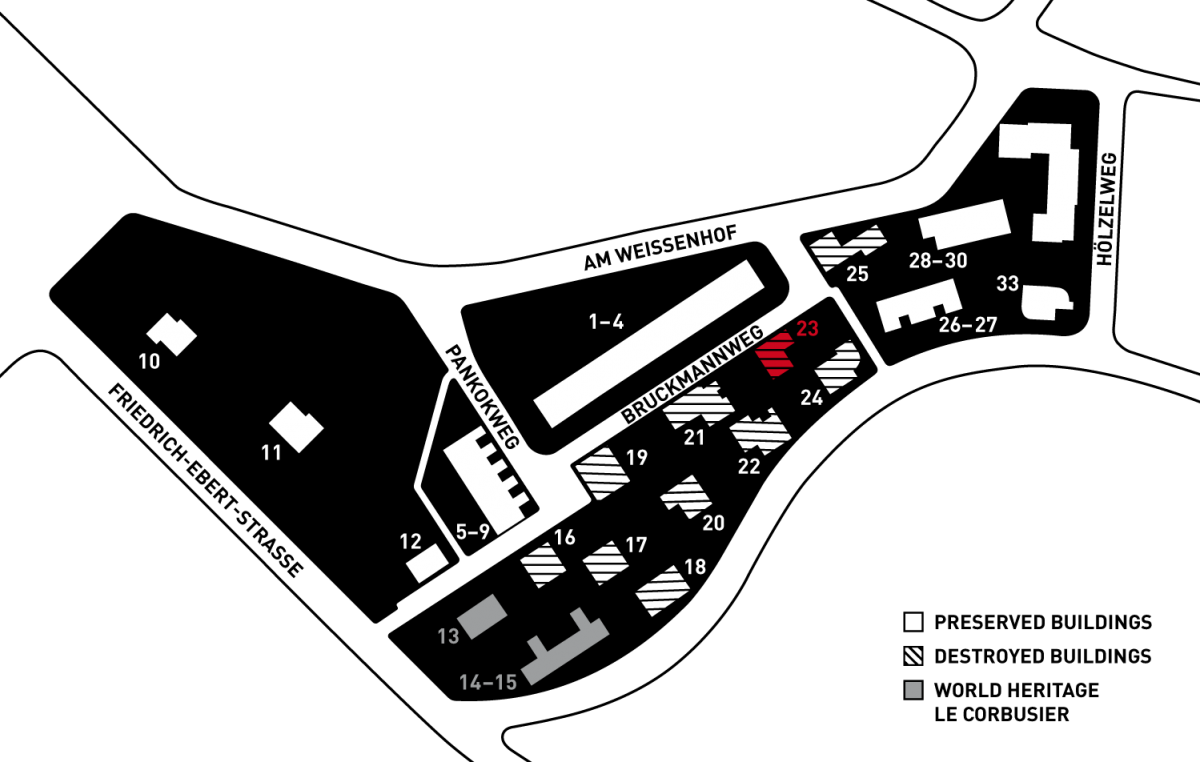
Bruckmannweg 12
Single-family dwelling, destroyed
Replaced by a new two-family dwelling in 1959
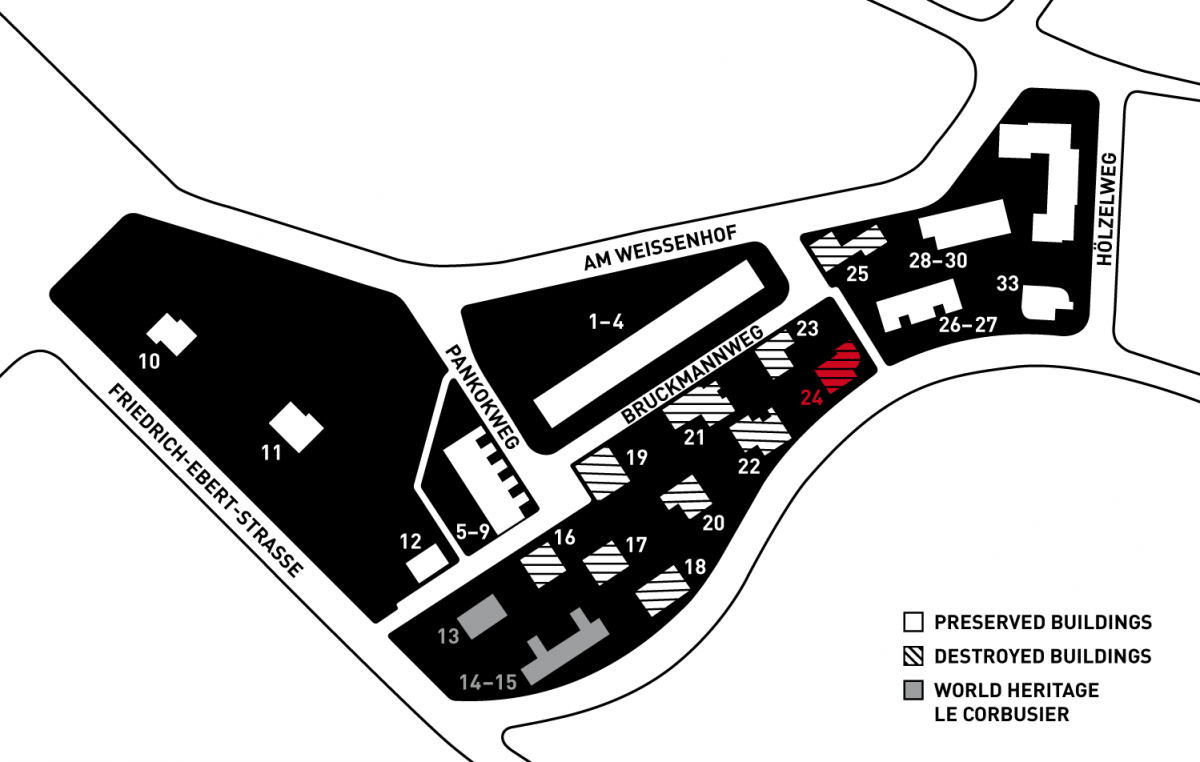
Rathenaustrasse 11
Single-family dwelling, destroyed
Replaced by a new two-family dwelling in 1956

